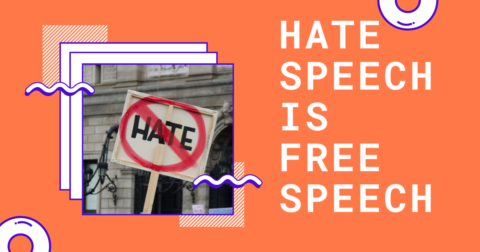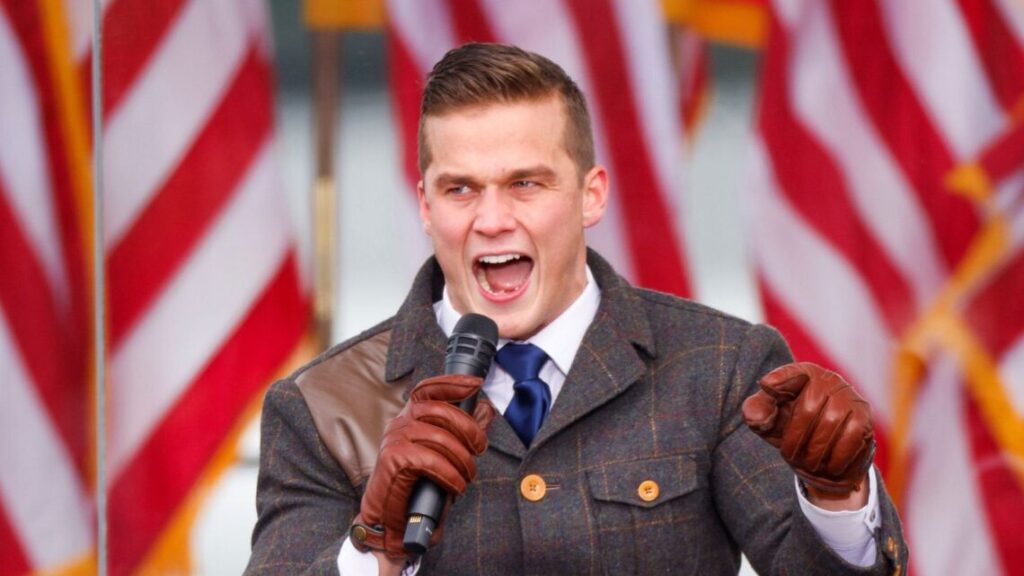Limiting the 1st Amendment
Despite its prominent plating in the lore Americana, Justice Oliver Wendell Holmes’s clear and present standard, exemplified by shouting fire in a crowded theater, has been recognized as inconstant, prone to bias, and unsatisfactory at explaining the threshold of America’s First Amendment.

The case in which this standard was established, Schenck v. United States, was a landmark decision in defining the limits of the First Amendment. Schenck distributed draft opposition flyers, calling the state act “a form of involuntary servitude that violated the Thirteenth Amendment.” For that affront, Schenck was found guilty of violating the Espionage Act of 1917.
When, just a few months later, self-proclaimed “revolutionists” threw anti-war pamphlets from the window of a building in New York City, they too would fall prey to this standard. Of note, OWH, perhaps seeing a self-administered crack in Pandora’s box, dissented in that decision. In the judge’s eyes, Schenck’s material coaxed readers into committing a crime (dodging the draft), while the defendants involved in Abrams disseminated material focused on America not involving itself in Russian affairs. To the majority of the court, the distinction was of no consequence.
Justice Holmes would once again be thwarted by his clear and present standard when Gitlow v. New York resulted in another socialist’s conviction being upheld by the highest court.
Literal Nazis

While free speech cases before World War 2 were typically related to individuals with socialist connections critiquing the American state, the use and impact of German propaganda turned the world’s attention towards “hate speech.” Germany led the way, aiming to prevent any resurgence of the Nazi ideology, but western Europe would follow suit with their own Race Relations Laws. Because these laws never work as intended, the first man who violated such a law in England was a black man insulting a police officer. The fruit of Germany’s efforts are women like 89-year-old Ursula Haverbeck being imprisoned for two years as a result of denying the holocaust.
Despite its inconsistent and sometimes illogical attempts to limit socialist criticism of the state, the United States would continue its tradition of protecting “hate speech” under the First Amendment – diverging from all industrialized countries. In the 1970s, literal Neo-Nazi Frank Collin and his National Socialist Party of America (NSPA) requested a permit to hold a white-power demonstration in the North Shore suburbs of Chicago. The Village of Skokie would go on to pass three ordinances rendering it impossible for the NPSA to hold their events: A) A ban on military-style uniforms during demonstrations; B) a prohibition of the distribution of material containing hate speech; C) a requirement of a $350,000 insurance bond to hold a demonstration.
Represented by the ACLU, Collin’s attempts to appeal these injunctions were unsuccessful in lower courts. After further rejections by the Illinois Appellate Court and the Illinois Supreme Court, the case was brought to the Supreme Court. Ultimately, the court rejected Skokie’s injunctions, ruling that displays of the swastika are a symbolic form of free speech entitled to First Amendment protections.
Nadine Strossen, an American civil liberties activist and former president of the ACLU, called the case part of the gradual process in the 20th century to strengthen the First Amendment protections narrowed by earlier decisions. As the activist put it, “Illinois restrictions on Nazi ‘hate speech’ were so broad they could have been equally used to prohibit Martin Luther King Jr. demonstrations in Skokie.”
As indicated in this case, there are times when the state fights to maintain power under the guise of fighting white supremacy – the same as it once used race or international socialism.
Current day slippage
Expanding in the 1980s, feminist theory, critical race theory, and other alternative discourse attacked mainstream and official speech as inherently oppressive (white male-dominated discourse). Consequently, a conversation began revolving around the protection of oppressed and marginalized groups. With the number of degrees awarded in the humanities rising almost every year from 1987 to 2015, these theories, primarily pioneered by Marxist thinkers of the Frankfurt School, have become mainstream thought.
Not surprisingly, a Pew report in 2015 indicated the theories are starting to increase in popularity – with 40 percent of millennials supporting the notion of a state restricting speech that is offensive to minorities.
If current demographic changes and behavior remain constant, the majority will soon believe the stances we see below – which should be “deplorable” to any libertarian.

For those who support state suppression of speech most vocally, there is so rarely any discussion of the mechanisms of censorship. For instance, who would be the arbiter of whether or not YOU should hear something? Would it be Alicia Garza? Mitt Romney? Liz Cheney? The loudest voices in the room are typically the ones you should least trust.
As we’ve seen from the last century, there is always a specter to fear, something the majority wishes to silence, but you’ll be wise to remember the standards you support creating today are likely to be used against you tomorrow.





As much as I dislike hate speech, I have to agree. Anyone has a right to hate anything or anyone they want, no matter the reason or logic. What we must NOT do, is ACT on that hatred! Hate certainly not a good thing – but there are hateful people. Many people are hated because of their own actions. Personally, I hate Isis, Hamas, and their kind because of what they do. That doesn’t mean I hate all Muslims. I hate “BLM/Antifa, because of what they do! That doesn’t mean I hate all black people. I have two very good friends who are black. (I know, everybody says that. You’ll just have to take my word for it). On the other hand, most black people hate ALL white people, (statistical fact), just because they’re white. That’s okay. They have a right to feel that way if they choose to. That doesn’t give them the right to riot, loot, and destroy property!
Some white people, (the Klan, Neo-nazis, etc.), hate all black people, just because they’re black. That’s okay too. They have a right to feel however they want – but they MUST NOT ACT ON IT! One thing bothers me. Why has the word “NIGGER” (offensive, yes!), been elevated to the status of a career-destroying CRIME – but words like Honkey”, “Cracker”, “Lily”, “Snowflake”, etc. (equally offensive), are perfectly acceptable?